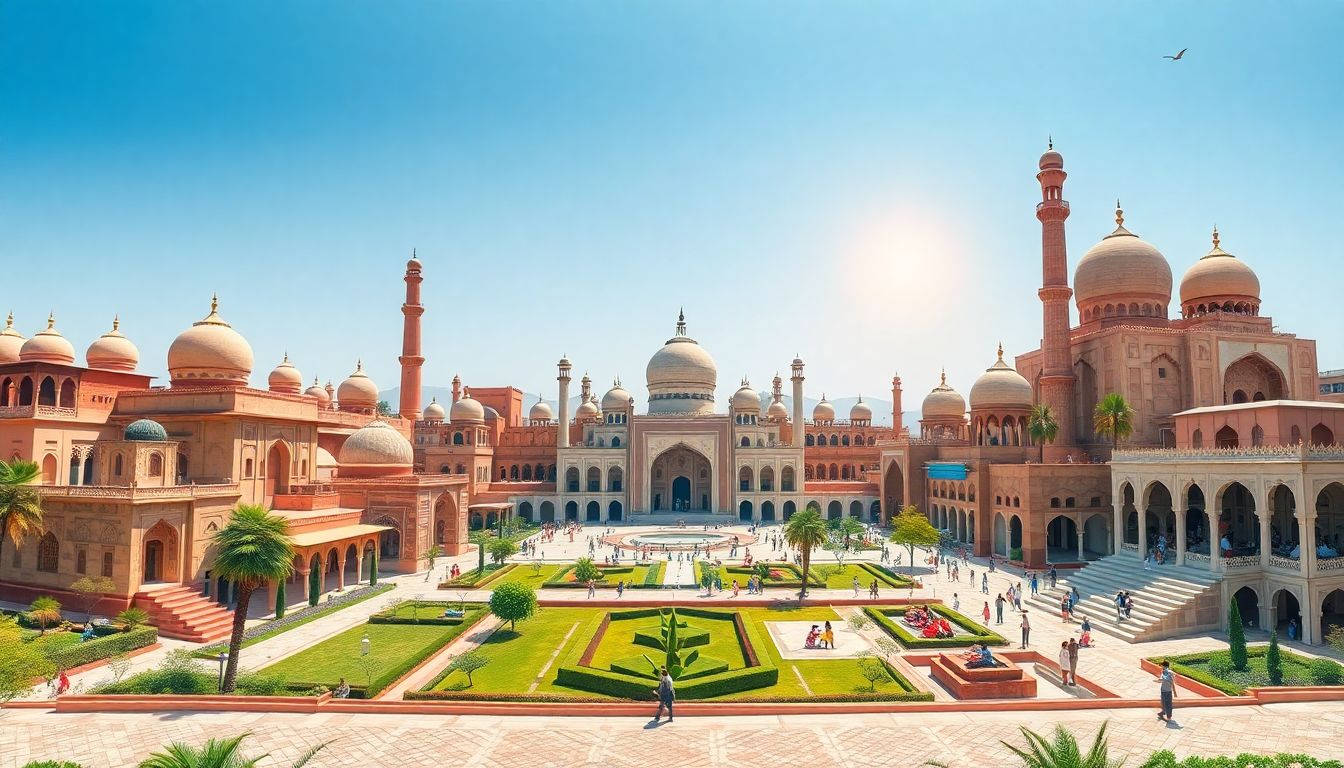
The Global Landscape of Madrasas: Number of Institutions and Their Impact
Introduction
Madrasas are some of the oldest educational institutions in the world, with roots stretching back over a thousand years. They hold deep cultural and religious significance in many Muslim communities globally. Today, madrasas continue to play a key role in shaping religious knowledge, community values, and social development. But how many madrasas are there around the world? What are they really achieving?
Many people have misconceptions about madrasas, especially due to media stories and political debates. However, understanding their true scale and contributions is crucial. Reliable numbers and a clear picture help us appreciate their role in society, beyond stereotypes. This article explores the total number of madrasas worldwide and highlights their diverse achievements.
The Global Count of Madrasas: An Overview
Estimated Number of Madrasas Worldwide
It’s not easy to count madrasas precisely. Different countries define and recognize these schools differently. Some register all formal institutions, while others only count the more official ones. Still, estimates suggest there are millions of madrasas across the globe.
The bulk of these institutions are in countries with large Muslim populations, such as Pakistan, India, Indonesia, Bangladesh, and many Middle Eastern nations. For example, Pakistan alone is believed to have over 15,000 registered madrasas, but unofficial figures suggest many more. In India, estimates point to about 30,000 madrasas serving millions of students. Indonesia, the country with the world's largest Muslim population, has thousands of madrasas blending religious and secular studies.
Challenges in Data Collection
Getting exact figures isn’t straightforward. Many madrasas operate informally or are not officially registered. Some are small, community-based schools. Others are large, well-funded institutions. Political and social reasons can hide the real number, especially in countries where religious education is sensitive.
Different types of madrasas—traditional vs. modern—also affect data. Traditional madrasas focus mainly on religious studies, while modern ones combine religious curriculum with science, math, and languages. This diversity adds more complexity to counting them accurately.
Regional Distribution and Characteristics
South Asia
South Asia hosts a large number of madrasas. Countries like Pakistan, India, and Bangladesh have deep-rooted traditions of religious schooling. In Pakistan, madrasas often serve as centers for religious community life. Many are involved in social work, providing aid to poor families. In India, madrasas are key places for religious education, especially in low-income areas. They help shape the community’s cultural identity.
Southeast Asia
Indonesia and Malaysia stand out in Southeast Asia with vibrant madrasa networks. Indonesian madrasas often combine religious studies with the national curriculum, making them more modern in approach. In Malaysia, some madrasas are recognized as official schools and follow government-approved syllabi. These institutions actively promote interfaith understanding and cultural preservation.
Middle East and North Africa
The Middle East has historically been the heart of Islamic scholarship. Countries like Egypt, Saudi Arabia, and Turkey are home to many influential madrasas. Many of these institutions receive government support, but some also operate independently. They continue to influence Islamic law, theology, and philosophy. Many prestigious scholars have graduated from Middle Eastern madrasas, shaping Islamic thought worldwide.
Sub-Saharan Africa
Madrasas are expanding rapidly in countries like Nigeria, Sudan, and Senegal. In places where formal education is limited, madrasas provide vital learning opportunities. Many focus on religious sciences, but some are incorporating basic literacy and numeracy. Challenges include funding and ensuring quality education, but their potential for community development is clear.
Achievements of Madrasas Worldwide
Educational Outcomes and Academic Contributions
Madrasas have long fostered scholarship within the Islamic world. Many produce top Islamic jurists, scholars, and leaders. Some madrasas now blend traditional teachings with modern subjects, boosting students’ chances outside religious fields. For example, Al-Azhar University in Egypt is famous for its religious research and scholarship.
Social and Community Impact
Madrasas often serve as social hubs. They distribute charity, support local development, and organize social programs. During crises or natural disasters, madrasas step in as relief centers. Their deep roots in communities mean they help foster social cohesion and shared identities.
Promoting Interfaith Dialogue and Cultural Preservation
Some madrasas actively promote understanding among different religious groups. They organize events, discussion forums, and cultural exchanges. Many survive as guardians of Islamic heritage, preserving traditions, arts, and languages that might otherwise fade away.
Contributions to Global Islamic Scholarship
Many renowned Islamic scholars started their education in madrasas. Their work influences religious jurisprudence, ethics, and philosophy. These institutions continue to shape Islamic thought, guiding millions worldwide through their teachings.
Challenges and Controversies
Misconceptions and Stereotypes
Too often, madrasas are linked to negative stories—was for violence or extremism. But most are peaceful, community-focused institutions. These misconceptions feed stereotypes and hinder constructive dialogue.
Security Concerns and Policy Responses
Governments worry about security risks linked to some madrasas. Many have imposed stricter monitoring. However, this can threaten religious freedom and education quality. Finding a balance is key to maintaining peace and openness.
Modernization and Reform Efforts
Some madrasas are trying to include secular education and modern skills. But traditional institutions face resistance. Change demands respect for their history while encouraging adaptation to today’s needs.
Actionable Insights and Future Directions
- Improve data collection methods to count and monitor madrasas worldwide.
- Support programs that raise teaching quality and modernize curricula without losing cultural roots.
- Promote partnerships between madrasas and mainstream schools.
- Highlight success stories to show madrasas' positive social and educational roles.
Conclusion
The estimated number of madrasas worldwide reaches into the millions, with a rich diversity of types and functions. These institutions are far more than religious schools—they are community pillars, centers of learning, and cultural custodians. Their achievements, from scholarship to social work, deserve recognition. Better understanding and sustained support can help madrasas fulfill their potential, benefiting communities and enriching global education. Recognizing their true contributions is essential to building respect, cooperation, and progress worldwide.




.jpg)


![Islam and Wine: Religious Teachings, Traditions, and Modern Practices [2025 Guide]](https://blogger.googleusercontent.com/img/b/R29vZ2xl/AVvXsEjs6jnXQlUw1-qmyopxHXp0BWtIw5lkF7aJmFJvjbW8yudPMXMUZDzLAY9tkSM6uG5UZYXclvr1brukNbCou9N9nMpWf5pBhalAkdtAyRAscejd0HfxTOqiHiRC_VUf5cVkPguWyv2DsTrmEjW2YwVMuHP30A2jV2eRun4OYN7fxhpgjI-2T0BWNdCq5g/w72-h72-p-k-no-nu/Alchohol-in-hadith.jpeg)


0 Comments